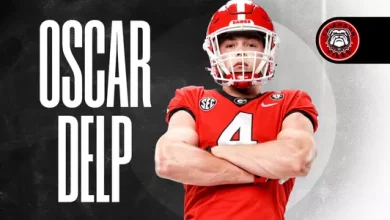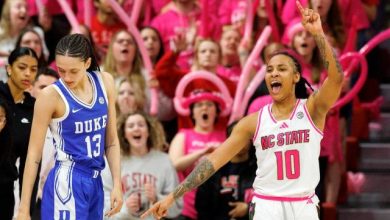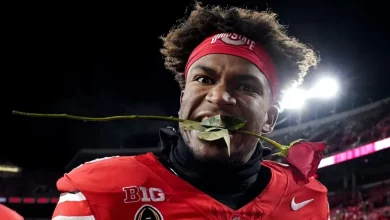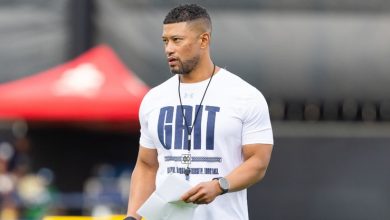NCAA Drops Recruiting NIL Ban and Resolves Lawsuit with Tennessee
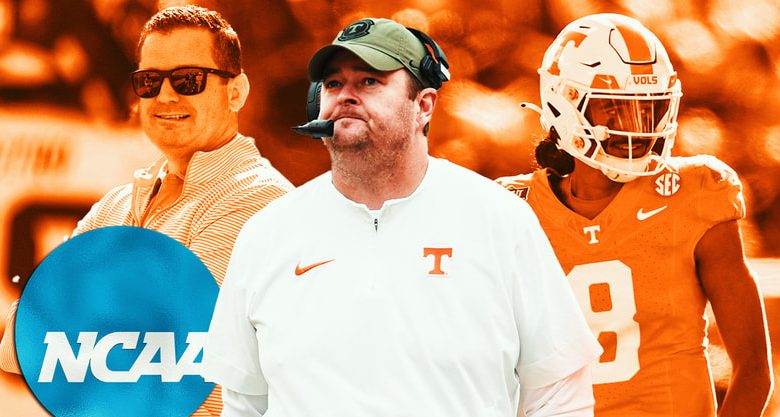
NCAA Drops Recruiting NIL Ban and Resolves Lawsuit with Tennessee: A New Era in College Sports
The world of college athletics has undergone a seismic shift in recent years, with Name, Image, and Likeness (NIL) rights leading the charge. The rise of NIL has radically changed how college athletes engage with their sports, allowing them to monetize their personal brands and endorsements in ways previously prohibited by the NCAA. However, as this new frontier expanded, the NCAA found itself in the crosshairs of multiple legal battles, forcing the governing body to adapt. One such battle came to a head with a lawsuit involving the University of Tennessee, a case that has now been resolved in a landmark decision. The NCAA has officially dropped its controversial recruiting NIL ban and reached a settlement with Tennessee, signaling a major shift in the way college sports will be governed moving forward.
This resolution not only marks the end of a contentious legal dispute but also sets the stage for a new chapter in college athletics, one where NIL rights, recruiting practices, and the balance of power within college sports will be reevaluated. In this article, we will explore the background of the lawsuit, the impact of the NCAA’s decision to drop the recruiting NIL ban, and the broader implications this case could have on the future of college sports.
1. Background: The Rise of NIL in College Sports
The debate over NIL rights in college sports has been a long time coming. For decades, college athletes were prohibited from profiting off their name, image, or likeness, despite the fact that the NCAA and universities were reaping enormous financial benefits from broadcasting rights, merchandise sales, and ticket revenues. This system was increasingly viewed as exploitative, particularly as college sports, especially football and basketball, generated billions of dollars in revenue each year.
The tipping point came in 2021 when the NCAA officially suspended its ban on NIL rights. This move was largely in response to mounting legal pressure, including a Supreme Court ruling in NCAA v. Alston, which ruled that the NCAA’s restrictions on educational benefits were in violation of antitrust laws. The Supreme Court ruling laid the groundwork for broader changes in college athletics, including the ability for athletes to sign NIL deals with companies, brands, and even schools themselves.
While NIL rights have allowed athletes to profit from their personal brands, the implementation of NIL rules has been a mixed bag. Some schools, particularly those in larger conferences or with more financial resources, have been able to offer athletes significant NIL deals, creating an uneven playing field in recruiting. On the other hand, schools with fewer resources have struggled to compete in this new environment, and some have raised concerns about the potential for NIL to distort the recruiting process.
2. The Controversial NCAA Recruiting NIL Ban
One of the most controversial aspects of NIL has been the question of how it intersects with college recruiting. The NCAA, in an effort to maintain competitive balance and prevent the recruitment process from becoming a bidding war for top talent, imposed certain restrictions on how NIL deals could be used in recruiting. Among these restrictions was a ban on schools directly facilitating or using NIL deals as a recruiting tool.
Essentially, the NCAA’s position was that schools could not offer or promise NIL opportunities as an enticement for athletes to commit to a particular program. This ban was designed to ensure that NIL deals were not used to unfairly influence a recruit’s decision-making process and to keep recruiting practices from turning into a marketplace where the highest bidder would land the top players.
However, the NCAA’s efforts to regulate NIL in recruiting quickly ran into legal challenges. Several universities, including Tennessee, argued that the NCAA’s restrictions were overly broad, violated the principles of fairness, and interfered with the rights of athletes to seek NIL opportunities.
At the heart of the controversy was the fact that, while NIL deals were now allowed, the NCAA’s rules appeared to restrict how those deals could be integrated into the recruiting process. Tennessee, along with other schools, argued that these restrictions stifled their ability to compete in a rapidly changing landscape. The lawsuit filed by Tennessee against the NCAA challenged the legality of the recruiting NIL ban, claiming that it infringed on the university’s rights to operate within the evolving marketplace for college athletics.
3. Tennessee’s Lawsuit Against the NCAA
The University of Tennessee filed a lawsuit against the NCAA, seeking a legal resolution to the issues surrounding NIL and recruiting. The lawsuit alleged that the NCAA’s recruiting NIL ban was not only unfair but also illegal. Tennessee argued that the NCAA’s restrictions were in violation of antitrust laws, which protect the rights of institutions to engage in free and fair competition.
At the core of Tennessee’s lawsuit was the argument that NIL deals, in their current form, were fundamentally different from previous forms of athlete compensation. Since NIL rights were granted to athletes, schools should be able to freely engage with athletes and their potential earning opportunities. The university contended that, by preventing schools from offering NIL opportunities during recruitment, the NCAA was preventing them from competing fairly in the recruitment of top-tier talent.
The lawsuit was a high-stakes legal battle, as it threatened to unravel the NCAA’s control over the rules governing college athletics. If the court ruled in favor of Tennessee, it could lead to further challenges against the NCAA’s broader authority in regulating NIL and recruiting practices.
4. The NCAA Drops the Recruiting NIL Ban
After months of legal wrangling and negotiations, the NCAA made a significant move that would reshape the landscape of college sports. The governing body decided to drop its ban on recruiting NIL deals and reached a settlement with the University of Tennessee, effectively resolving the lawsuit. The decision to lift the ban marks a monumental shift in NCAA policy and signals a new era in college athletics.
Under the new framework, schools will no longer be prohibited from engaging in NIL-related discussions during the recruitment process. Instead, they will be able to freely discuss potential NIL opportunities with recruits, giving schools more autonomy in their recruiting efforts. While there will still be rules and regulations to ensure that NIL deals are not used as direct inducements to sign with a specific program, the overall restrictions have been significantly loosened.
This change effectively opens the door for schools to use NIL deals as part of their recruiting pitch, allowing them to compete on a more level playing field. The decision will also likely spur further developments in how college sports programs structure their recruiting strategies, potentially leading to a new era of recruiting battles centered not just on athletic performance but on the financial opportunities athletes can receive.
5. Implications for College Recruiting
The lifting of the recruiting NIL ban has profound implications for the future of college recruiting. By allowing schools to directly engage with athletes about NIL opportunities, the NCAA is acknowledging the reality that NIL has become an integral part of the recruiting process. However, this shift also raises concerns about the future landscape of college athletics.
1. The Rise of NIL Collectives
With the NCAA lifting the ban, one of the most likely developments will be the rise of NIL collectives. These organizations, often backed by alumni or boosters, pool resources to create NIL deals for athletes in exchange for their commitment to a particular school. While collectives have already been active in college recruiting, the new rule change will likely lead to a surge in these efforts, as schools work to outbid each other for top-tier talent.
The rise of NIL collectives will change the dynamics of recruiting, especially in high-profile sports like football and basketball. For athletes, NIL deals may now become a central factor in their recruitment, alongside traditional factors like coaching staff, team success, and personal fit. This could lead to a more professionalized recruiting process, where athletes weigh not just their potential for athletic success but their ability to profit off their name, image, and likeness.
2. Recruiting Wars and Unequal Competition
While the new NIL rules give schools more freedom to compete, they also have the potential to exacerbate the financial disparity between programs. Schools with wealthy alumni bases and significant financial resources will be better positioned to offer lucrative NIL deals to recruits, while smaller programs with fewer resources may struggle to compete. This could lead to a situation where the “haves” in college athletics—such as elite programs in the Power Five conferences—are able to attract top recruits more easily, while smaller schools find it harder to land high-profile talent.
The increased competition for NIL deals could also change the nature of college recruitment. No longer will a school’s reputation on the field or court be the sole factor in attracting top recruits. Instead, schools will have to balance traditional recruiting tactics with a new focus on financial incentives and potential NIL opportunities.
3. Ethical Concerns and Potential Abuse
The lifting of the recruiting NIL ban also raises concerns about potential abuses of the system. Critics argue that allowing NIL to play such a prominent role in recruitment could lead to unscrupulous practices, such as backdoor payments or the offering of excessive financial incentives to recruits. In the worst-case scenario, the recruiting process could devolve into a free-for-all where the wealthiest programs are able to secure the best players simply through financial inducements, undermining the integrity of college sports.
The NCAA will need to implement stricter regulations and monitoring to ensure that NIL deals are not used as direct payments for athletic commitment, as this could turn college sports into a de facto professional league, which could erode the amateur nature of college athletics.
6. Impact on Tennessee and Other Schools
For the University of Tennessee, the settlement and the lifting of the recruiting NIL ban is a significant victory. The Vols are positioned well to capitalize on the new rules, as the school has already demonstrated its ability to compete in recruiting, especially under head coach Josh Heupel. The Vols have been making waves in recruiting, and with the ability to engage in NIL discussions with recruits more freely, Tennessee can position itself as a serious player in the SEC and on the national stage.
Other schools will also have to adjust to this new reality, as NIL opportunities will now be a central component of their recruiting strategies. This could lead to a more competitive and, in some cases, more financially-driven environment in college athletics.



